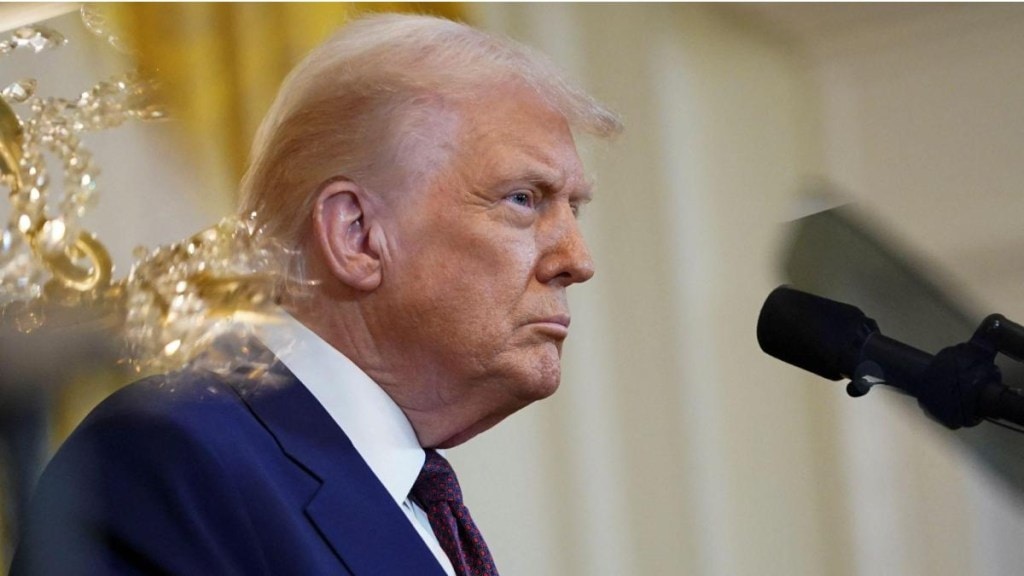By Abhijit Das, The writer is an expert on international trade
President Donald Trump’s action on March 4, imposing additional 10% tariffs on China, 25% tariffs on Canada and Mexico, and reiterating his earlier decision to impose reciprocal tariffs on other countries may not have caught many by surprise. However, not many are likely to be aware that these moves are part of the long-standing playbook of the US in international trade negotiations going back several decades: erect barriers, often illegal, to the exports of other countries and extract concessions from them for rewriting trade rules in favour of developed countries.
What are some of the successful examples of the US resorting to this strategy in the past? Why does this strategy work? Will this strategy again bring handsome returns to the US at the negotiating table? Let us examine these questions.The Uruguay Round of multilateral trade negotiations at the General Agreement on Tariffs and Trade (GATT) and the Doha Round at the World Trade Organization (WTO) provide specific illustrations of the US creating a leverage at the negotiating table by blocking, or threatening to restrict, exports from key developing countries.
During the initial years of the Uruguay Round (1986 to February 1989), Brazil and India resisted negotiating standards for the protection of intellectual property rights (IPR) at the GATT — a key demand of the US. As a negotiating strategy, the US imposed 100% tariffs on $39 million worth of imports from Brazil, and started threatening India with unilateral tariff action on garment exports. In the face of these illegal actions, it is not surprising that by April 1989 these two developing countries changed their negotiating stance and fell in line with the wishes of the US on IPR issues.
Economic coercion helped the US in advancing its objectives at the GATT negotiating table and resulted in the agreement on Trade-Related Aspects of Intellectual Property Rights.The US repeated this strategy in the negotiations on trade facilitation during the Doha Round at the WTO. During May-July 2014, many African countries had misgivings about putting the finishing touches to the Trade Facilitation Agreement (TFA), which had been finalised a few months ago at the WTO’s ministerial conference in Bali. In this uncertain situation, the Obama administration stepped in decisively.
As reportedly mentioned by a prominent African minister, the US issued a veiled threat to stop importing from African countries at zero, or low, tariffs under its African Growth and Opportunity Act if they did not support the TFA. This compelled the African countries to agree to the TFA.Why explain the success of this strategy? Given the high dependence of many countries on the US market for their exports, foregoing such an opportunity could significantly reduce their exports and curtail economic growth. It is, therefore, not surprising that developing countries have, in the past, acquiesced to even unreasonable demands of the US in trade negotiations. In the current times, Mexico, with more than 78% of its exports destined for the US, India (18%), Thailand (17%), and South Korea (16%) are particularly vulnerable to the US tariff threat.
Will President Trump’s strategy of seeking to prise open markets through getting countries to lower their tariffs, negotiating new rules on non-discriminatory treatment in government procurement, and strengthening rules on IPR protection mainly for enhancing windfall profits of its pharmaceutical sector succeed?At this juncture, two scenarios are likely. If changes that may be made by developing countries in respect of tariffs and regulatory regimes — especially on IPRs — for meeting US demands are extended to all members of the WTO, as may be required under the most-favoured nation rule, it would also promote the economic interests of other developed members.
Notwithstanding the differences between the US and the European Union (EU) on some geopolitical issues, the possibility of the latter supporting the former covertly on opening up markets and new rules on some aspects of trade cannot be ruled out. Under this scenario, the US and other developed countries are likely to emerge as outright winners while several developing countries are encumbered with skewed and asymmetric outcomes. Of course, Canada and the EU may be required to accommodate some of the interests of the US.
This scenario is likely to be accompanied with supportive narratives by renowned trade academics, mainly from the developed countries, who might suddenly discover virtues in Trump’s actions on trade.While the previous scenario is in line with the historical experience at GATT/WTO, when power play determined most negotiated outcomes, in today’s circumstances another possibility cannot be ruled out. The US weaponising tariffs as a negotiating ploy to secure concessions goes beyond developing countries to now encompass developed countries as well.
With the EU aggrieved by the geopolitical fallout of Trump’s possible actions on the North Atlantic Treaty Organization and Ukraine, it could take the lead in coordinating with Canada and some developing countries to collectively challenge Trump’s America First trade agenda. Linked to this scenario is the possibility of some larger developing countries not respecting the IPRs of American holders of intellectual property, thereby compelling the US to get back on the rules-based track. This could queer the pitch for Trump’s trade ambitions. With Canada and China having announced retaliatory tariffs against the US and Mexico vowing to do so, this scenario may already be unfolding.
In conclusion, no country on its own can succeed in defending itself against the onslaught of Trump tariffs and the US quest for regulatory changes in key markets for promoting its interests. Whether some countries will have the wisdom to resist the temptation of retaining their export opportunities in the US in the short term, and instead join hands for securing long-term benefits of a rules-based trade regime, remains to be seen.

